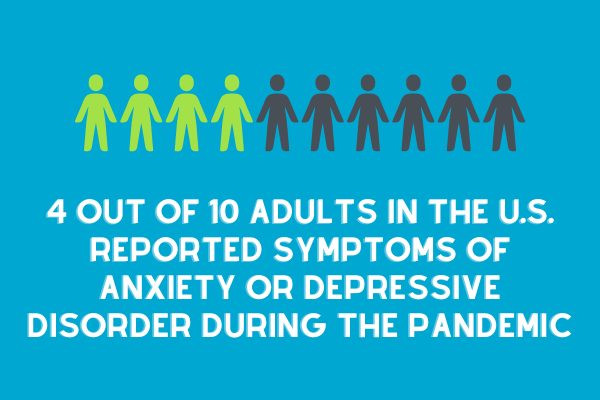Employee wellness benefits are shifting focus to reflect modern times
When current and future employees examine a company’s benefits package, they typically expect to see employer-sponsored health insurance among the offerings. Comprehensive, affordable options encourage employee retention. Likewise, attractive plans become a selling point when interviewing job candidates.
With rising medical costs, employee concern over health insurance coverage will not wane any time soon. The COVID-19 pandemic, however, generated interest in wellness services beyond routine visits to the doctor. Savvy organizations keep on top of these emerging trends. Such information guides benefit-plan decisions in order to stay competitive in enticing and keeping talent.
Which services are hot and which are not given the current climate? Wellable recently conducted a survey to see where companies are investing more of their wellness dollars. Here are the major findings:
Mental health has emerged as a chief concern
The stigma and secrecy surrounding mental health issues has been lifting steadily throughout the 21st century. The COVID-19 crisis, however, catapulted its importance to new heights as people struggled with isolation, uncertainty, grief, and fear. Information collected by the Kaiser Family Foundation shows 4 out of 10 adults in the United States reported symptoms of anxiety or depressive disorder during the pandemic, a significant jump from 1 in 10 in 2019.
From problems sleeping to difficulty concentrating, individuals struggled to do everyday activities — including their job. It comes as little surprise, then, that mental health assistance took the top spot in the Wellable survey. Eighty-eight percent of respondents cited mental health as an area they were planning to invest more in during 2021.
Many companies choosing this increase echo the sentiment of Markus Albert, managing director of EatFirst, a global corporate food services and event staffing platform.
“We want our people to take their mental health seriously because we sincerely believe in the importance of good psychological health. We also recognize the link between mental well-being and productivity, so we have made it easy and free for any employee who is interested to get their mental health evaluated by a professional via online chat. We use experienced and certified mental health professionals, and the aim is to help employees recognize how they can and should take better care of their psyches.”
The study likewise found increased willingness to invest in stress management and mindfulness/meditation, with both landing in the top five (81% and 69%, respectively). Some organizations offer seminars on topics such as relaxation techniques and work-life balance. Others pay for subscriptions to guided meditation services.
“Our company offers yoga lessons twice a week to our employees, which are held on the rooftop with breathtaking views of the ocean and mountains,” says Darshan Somashekar, founder and CEO of Solitaired. “Yoga and meditation are excellent stress relievers. Team members at startups and PR firms are often faced with tight deadlines and overtime. Yoga is a great way to bring self-care into the workplace.”
Telehealth is here to stay
Telemedicine ranked second in the Wellable survey, with 87 percent of respondents saying they planned to increase spending on it.
Virtual office visits thrived during the pandemic as people sought a safe, quick way to obtain medical information and evaluation. The percentage of physicians using telehealth to see patients rose from 22 percent in 2019 to a whopping 80 percent in 2020, according to Amwell’s Physician and Consumer Survey. This expansion resulted in tripling the number of consumers who have participated in a virtual visit.
What started as a necessity, though, looks to continue by choice. Many people discovered that they liked the convenience of telehealth and were satisfied with the care received. If offered at low or no cost, they welcomed the chance to save money.
Employers stand to benefit, too. With flexible scheduling options, telehealth cuts down on employees needing to miss work for a medical appointment. Without the hassle of a physical trip, the set-up also encourages people to go ahead and see a doctor for “little things.” Catching a problem early can prevent it from becoming a large, costly situation down the line.
“Access to medical advice quickly is a low-cost solution that we have incorporated into our corporate wellness program,” says Edward Briggs of HomeReviews.com. “Employees can call a live nurse hotline to get the support they need before having to pay for an expensive stay in the hospital emergency room.”

Creating a safe environment remains important
Even as more people get vaccinated and regulations loosen, pandemic concerns remain top of mind. Landing in the top five on the Wellable survey is spending on COVID-19 risk intake/wellness passport programs. Sixty-three percent of participants planned on increased investment in this area.
Some previously popular perks are declining
Offering or expanding certain wellness measures often requires shifting dollars away from other perks. Areas that ranked the highest in the Wellable survey in terms of the percentage of employers expecting to invest less include:
- Health fairs (60%)
- Free healthy food/stocked kitchens (54%)
- Biometric screenings (53%)
- On-site fitness classes (48%)
- Gym membership reimbursement (38%)
While the need to redo budgets in order to fund other initiatives plays some role in the downward trend of these things, the pandemic also likely influences decisions. Increases in remote work decrease the appeal of office-based healthcare benefits. Likewise, employees right now may be leery to share food or to participate in exercise that involves being around others.
“We dropped our gym membership benefit and created a fitness stipend that allowed employees to spend a certain amount on at-home fitness equipment and classes,” says Jake Hill, CEO of DebtHammer. “This has been more widely-used, and a lot of our employees have told us just how much they appreciate the ability to stay fit at home.”
2022 looks difficult to predict
Just as the pandemic caused companies to take a close look at ways to improve employee well-being, the post-pandemic world will require equal vigilance. Demand for certain wellness measures may strengthen or weaken in response to how the rest of 2021 plays out, and employers need to be responsive.
As Zoë Morris, president of the global IT recruiting firm Jefferson Frank, aptly summarizes, “The future of work is changing before our eyes. The next year will see a radically different way of working for most people around the world. The challenge for employers in terms of the employee experience isn’t necessarily to predict those changes, but to be flexible enough to roll with it and be creative enough to continue offering benefits that empower employees to better manage their own wellbeing and work-life balance.”








